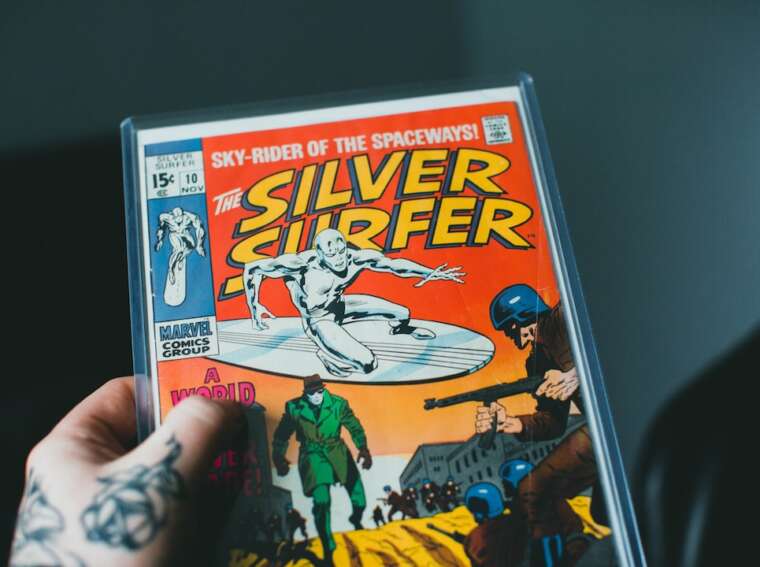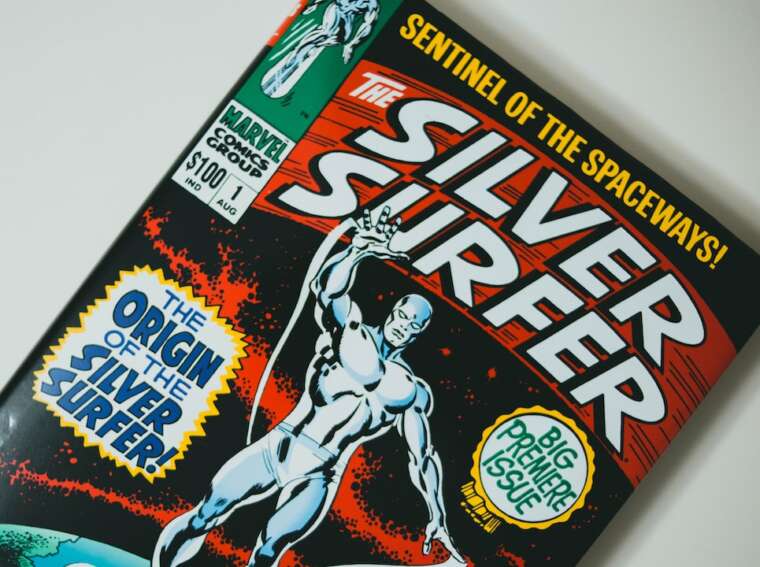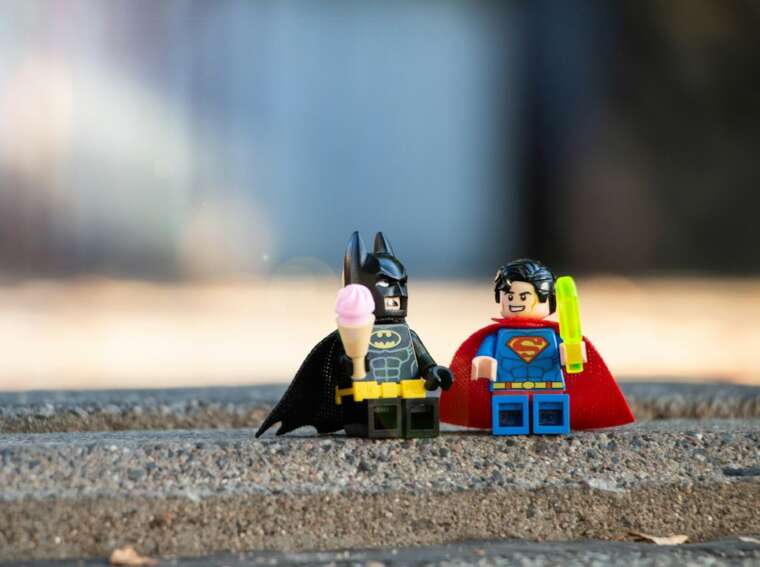Introduction to the Marvel Cinematic Universe (MCU)
The Marvel Cinematic Universe (MCU) is a franchise that has taken the world by storm. It all began with Marvel Comics, which was founded in 1939 and quickly became one of the most popular comic book publishers in the world. Over the years, Marvel Comics introduced iconic characters such as Spider-Man, Iron Man, Thor, and Captain America.
In 2008, Marvel Studios released “Iron Man,” the first film in what would become the MCU. This marked the beginning of a new era for superhero movies, as Marvel Studios took a unique approach by creating an interconnected universe where characters from different films could cross over and interact with one another. This concept was inspired by the success of the comics, where characters often appeared in each other’s stories.
The MCU has had a significant impact on pop culture, revolutionizing the way superhero movies are made and consumed. It has become a cultural phenomenon, with fans eagerly anticipating each new installment and dissecting every detail. The success of the MCU has also paved the way for other studios to create their own shared universes, such as DC Extended Universe and Universal’s Dark Universe.
Phase One: The Beginning of the MCU
Phase One of the MCU introduced audiences to some of Marvel’s most beloved characters. It all started with “Iron Man,” which not only launched the franchise but also introduced Robert Downey Jr.’s Tony Stark/Iron Man, who would become one of the central figures in the MCU. This film set the tone for what was to come, blending action, humor, and heart.
Following “Iron Man,” Marvel Studios released “The Incredible Hulk,” “Iron Man 2,” “Thor,” and “Captain America: The First Avenger.” Each film focused on a different character but also laid the groundwork for future crossovers. The post-credit scene in “Iron Man” teased the formation of the Avengers, a team of superheroes who would come together to save the world.
“The Avengers” was the culmination of Phase One and brought together Iron Man, Thor, Captain America, Hulk, Black Widow, and Hawkeye. The film was a massive success both critically and commercially, solidifying the MCU as a force to be reckoned with. The post-credit scene in “The Avengers” introduced audiences to Thanos, a powerful villain who would play a major role in future films.
Phase Two: The Rise of the Avengers
Phase Two of the MCU saw the introduction of new characters and further development of the Avengers’ storylines. Films such as “Iron Man 3,” “Thor: The Dark World,” and “Captain America: The Winter Soldier” delved deeper into the lives of these characters and explored their personal struggles.
One of the standout films of Phase Two was “Guardians of the Galaxy,” which introduced a whole new group of heroes to the MCU. This film took audiences to space and expanded the scope of the universe. It also showcased Marvel’s ability to take risks and introduce lesser-known characters to mainstream audiences.
Another significant film in Phase Two was “Avengers: Age of Ultron.” This film not only brought back the Avengers but also introduced new characters such as Scarlet Witch, Quicksilver, and Vision. It further explored the dynamics within the team and set up future storylines.
Phase Three: The Infinity Saga
Phase Three of the MCU is often referred to as the Infinity Saga, as it revolved around Thanos and his quest for the Infinity Stones. This phase kicked off with “Captain America: Civil War,” which pitted the Avengers against each other in a battle over ideology. It set the stage for future conflicts and divided the team.
The introduction of Thanos in “Guardians of the Galaxy” was a game-changer for the MCU. Thanos, played by Josh Brolin, became one of the most memorable villains in cinematic history. He was a complex character with a tragic backstory, which made him all the more compelling.
The culmination of the Avengers’ storylines came in “Avengers: Infinity War” and “Avengers: Endgame.” These films brought together almost every character from the MCU and delivered an epic conclusion to the Infinity Saga. The impact of these films on audiences cannot be overstated, as they were emotional roller coasters that left fans in awe.
The Importance of Post-Credit Scenes
One of the defining features of the MCU is its use of post-credit scenes. These scenes, which play after the main credits have rolled, have become a staple of Marvel movies and are eagerly anticipated by fans. They often tease future films or provide additional context to the story.
Post-credit scenes serve multiple purposes. They reward dedicated fans who stay until the end of the credits, as they often contain Easter eggs or hints about what’s to come. They also help to build anticipation for future films by teasing new characters or storylines. Additionally, post-credit scenes can provide closure or add an extra layer of depth to the film.
Some of the most significant post-credit scenes in the MCU include the introduction of Thanos in “The Avengers,” the reveal of Quicksilver and Scarlet Witch in “Captain America: The Winter Soldier,” and the appearance of Spider-Man in “Captain America: Civil War.” These scenes generated buzz and excitement among fans, fueling speculation and theories about what would happen next.
Standalone Marvel Movies: A Guide
While the Avengers films are often considered the main events in the MCU, there are also standalone movies that focus on individual characters. These films provide a deeper exploration of their backstories and allow audiences to connect with them on a more personal level.
Some of the standout standalone Marvel movies include “Iron Man,” “Captain America: The Winter Soldier,” “Guardians of the Galaxy,” and “Black Panther.” These films not only showcase the talents of their respective directors and actors but also push the boundaries of what superhero movies can be.
For those who are new to the MCU, it can be overwhelming to know where to start. A recommended viewing order is as follows: “Iron Man,” “The Incredible Hulk,” “Iron Man 2,” “Thor,” “Captain America: The First Avenger,” “The Avengers,” and so on. This order allows for a chronological understanding of the events in the MCU.
The Evolution of Marvel Villains
One criticism that has been leveled against the MCU is its lack of compelling villains. In the early phases, Marvel struggled to create memorable antagonists who could match the charisma and complexity of their heroes. However, in recent years, Marvel has made significant strides in this area.
In Phase One, Loki was one of the standout villains. Played by Tom Hiddleston, Loki was a complex character with his own motivations and struggles. He became a fan favorite and appeared in multiple films throughout the MCU.
Phase Two saw the introduction of villains such as Ultron and Ronan the Accuser. While these characters had their moments, they were ultimately overshadowed by the heroes. However, Phase Three introduced villains like Thanos, Killmonger, and Hela, who were more nuanced and memorable.
The Impact of Marvel TV Shows on the MCU
In addition to movies, Marvel has also ventured into television with shows such as “Agents of S.H.
E.L.D.” and “Daredevil.” These shows exist within the same universe as the movies and often reference events from the films.
“Agents of S.H.
E.L.D.” was one of the first Marvel TV shows and followed the adventures of Agent Phil Coulson and his team. It provided a deeper exploration of the S.H.E.L.D. organization and introduced new characters and storylines.
“Daredevil” was another successful Marvel TV show that focused on the street-level hero of Hell’s Kitchen. It was praised for its gritty tone and complex characters. Other Marvel TV shows such as “Jessica Jones,” “Luke Cage,” and “Iron Fist” also received positive reviews.
While the Marvel TV shows have had an impact on the MCU, their connection to the films has been somewhat limited. There have been occasional crossovers, but for the most part, the TV shows exist in their own separate corner of the universe.
Future of the MCU: Phase Four and Beyond
The future of the MCU is bright, with Phase Four set to introduce new characters and storylines. Some of the upcoming films include “Black Widow,” “Shang-Chi and the Legend of the Ten Rings,” and “Doctor Strange in the Multiverse of Madness.” These films will continue to expand the universe and push the boundaries of what superhero movies can be.
In addition to movies, Marvel is also venturing into television with shows such as “WandaVision,” “The Falcon and The Winter Soldier,” and “Loki.” These shows will further explore the lives of beloved characters and provide a deeper understanding of their journeys.
Speculation about the future of the MCU is rampant, with fans eagerly theorizing about what’s to come. Will we see a new team of Avengers? Will there be more crossovers with other franchises? Only time will tell, but one thing is for certain: the MCU is here to stay.
How to Watch the Marvel Movies in Chronological Order
For those who want to watch the Marvel movies in chronological order, it can be a bit confusing due to flashbacks and time jumps. However, a recommended viewing order is as follows:
1. “Captain America: The First Avenger” (takes place during World War II)
2. “Captain Marvel” (takes place in the 1990s)
3. “Iron Man” (takes place in 2010)
4. “Iron Man 2” (takes place after “Iron Man”)
5. “The Incredible Hulk” (time unspecified, pre-Avengers)
6. “Thor” (takes place six months before “The Avengers”)
7. “The Avengers”
8. “Iron Man 3” (takes place six months after “The Avengers”)
9. “Thor: The Dark World” (post-“Avengers,” pre-“Guardians of the Galaxy”)
10. “Captain America: The Winter Soldier” (post-“Avengers,” pre-“Age of Ultron”)
11. “Guardians of the Galaxy” (takes place in 2014)
12. “Guardians of the Galaxy Vol. 2” (post-“Guardians of the Galaxy”)
13. “Avengers: Age of Ultron”
14. “Ant-Man”
15. “Captain America: Civil War”
16. “Black Widow” (upcoming film)
17. “Black Panther”
18. “Spider-Man: Homecoming”
19. “Doctor Strange”
20. “Thor: Ragnarok”
21. “Ant-Man and The Wasp” (takes place before “Infinity War”)
22. “Avengers: Infinity War”
23. “Avengers: Endgame”
24. “Spider-Man: Far From Home”
This viewing order provides a chronological understanding of the events in the MCU and allows for a seamless transition between films.
In conclusion, the Marvel Cinematic Universe has had a profound impact on pop culture and revolutionized the way superhero movies are made and consumed. From its humble beginnings with “Iron Man” to the epic conclusion of “Avengers: Endgame,” the MCU has captivated audiences around the world. With Phase Four and beyond on the horizon, the future of the MCU looks bright, and fans can’t wait to see what’s in store.


